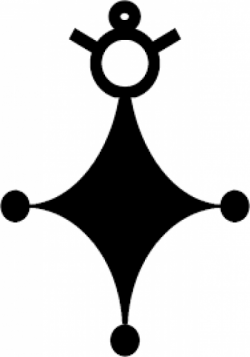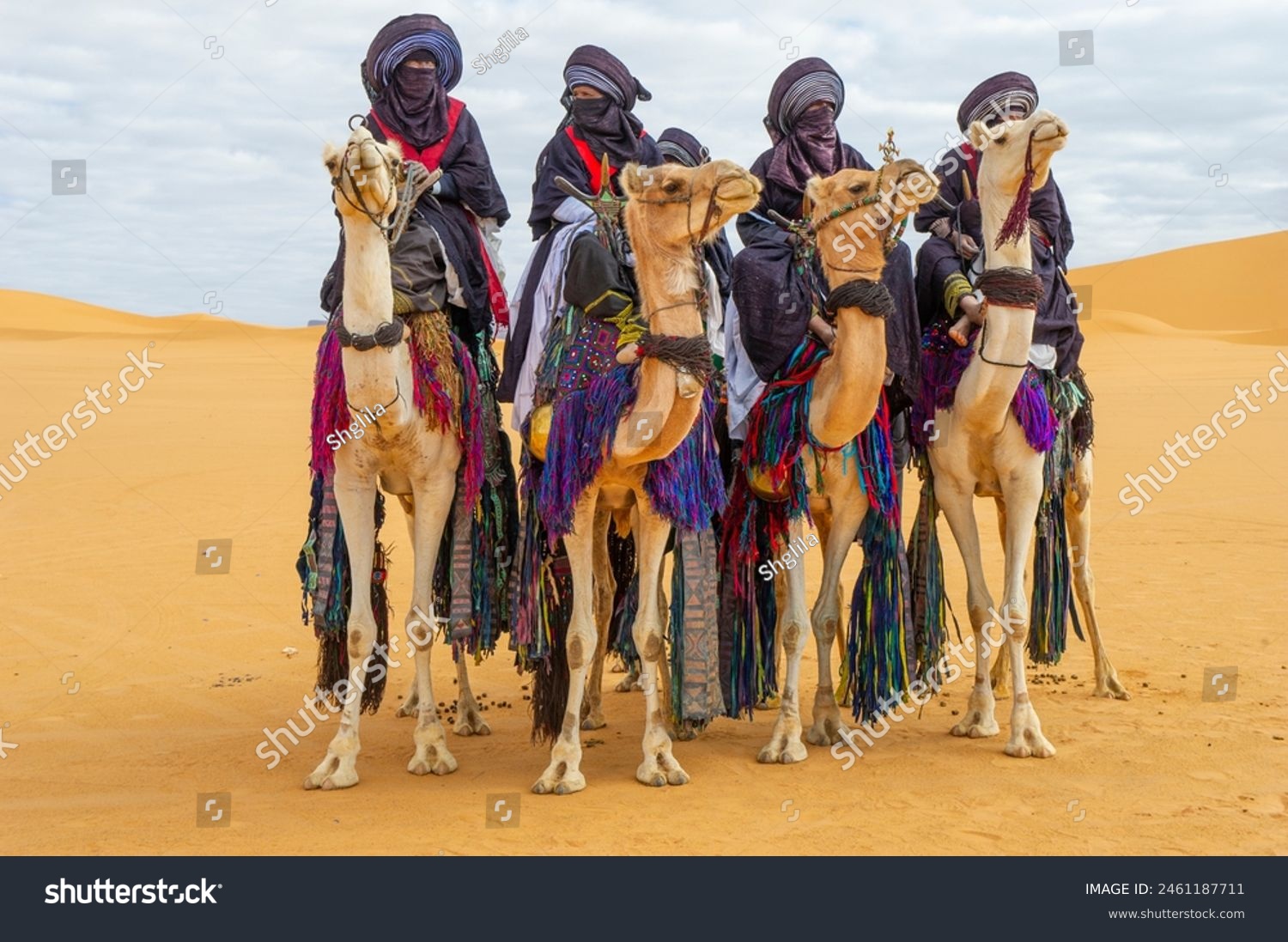Tuareg People
・The Tuareg are a semi-nomadic Berber ethnic group inhabiting the central Sahara Desert.
・Often called the "Blue People" due to their indigo-dyed garments, they are known for their poetic culture, resilient spirit, and deep desert knowledge.
・Traditionally pastoralists, traders, and storytellers, they maintain a proud identity despite colonial and political pressures.
Location
Tuareg communities span across
・Northern Mali
・Central and northern Niger
・Southern Algeria
・Southwestern Libya
・Northern Burkina Faso
・Their lifestyle includes seasonal migration and transnational trade routes.
History
・Descendants of ancient Berber populations in the Sahara.
・Maintained independence through Islamic expansions and colonialism.
・Played a key role in trans-Saharan trade, including salt, gold, and slaves.
・Post-colonial nation-states divided their lands, leading to political marginalization and movements for autonomy (e.g., Azawad in Mali)..
Culture
・Clothing:Men wear the "tagelmust" (veil) and indigo-dyed garments that stain their skin blue.
・Social structure:Matrilineal elements; women traditionally hold property and heritage.
・Music & Poetry:Instruments like the imzad accompany poetic recitations. Modern Tuareg bands like Tinariwen blend tradition with modern music.
・Religion:Sunni Islam with blended ancestral and animist beliefs.
Tuareg Symbols and Flag

No single official ethnic flag, but symbols include
・The color blue and white in dress and fabric.
・ⵣ (Yaz symbol) written in Tifinagh script, often associated with Berber identity.
・Some Tuareg movements use the Azawad flag (red-black-green tricolor with crescent).
Language
・Speak Tamasheq/Tamajeq, part of the Berber branch of the Afro-Asiatic language family.
・Rich in consonants and poetic phrasing.
・Regional dialects exist, but are mutually intelligible across communities.
・Oral tradition remains strong, with elaborate metaphor and storytelling.
Common Tamasheq (Tuareg language) Greetings and Phrases
| English | Tamasheq (Tuareg language) | Pronunciation |
| Hello | Azul | Ah-zool |
|---|---|---|
| Good morning | Azul iɣllan | Ah-zool e-gh-lan |
| Good night | Azul ameksa | Ah-zool ah-mek-sah |
| Thank you | Tanemmirt | Tah-nem-meert |
| Nice to meet you | Sellaɣ s-aman | Sell-ahgh s-ah-man |
| Delicious | Ayet-tayari | Eye-et ta-yah-ree |
| Fun/Enjoyable | Tafsut | Tahf-soot |
Region
Continent:Africa
Access Guide
The currency of the Tuareg people is the West African CFA franc (XOF) in Mali.
Tuareg Region
Access to Tuareg Region (Agadez, Niger) from Major Cities
| Departure City | Direct/Transit | Arrival Airport | Flight Time (approx.) | Reference Fare (one-way/round-trip, Economy) |
| Los Angeles | LA → Paris/Istanbul → Niamey → Agadez | Agadez Airport (AJY) | 28–40 hours | US$1,600–2,400 |
|---|---|---|---|---|
| New York | NY → Paris/Istanbul → Niamey → Agadez | Agadez Airport (AJY) | 24–36 hours | US$1,400–2,100 |
| London | London → Paris/Istanbul → Niamey → Agadez | Agadez Airport (AJY) | 18–28 hours | £950–1,400 |
| Tokyo | Tokyo → Paris/Istanbul → Niamey → Agadez | Agadez Airport (AJY) | 26–38 hours | ¥230,000–360,000 |
| Sydney | Sydney → Dubai/Istanbul → Niamey → Agadez | Agadez Airport (AJY) | 30–45 hours | A$2,200–3,400 |
| Hong Kong | Hong Kong → Istanbul → Niamey → Agadez | Agadez Airport (AJY) | 25–38 hours | HK$10,000–17,000 |
| Shanghai | Shanghai → Istanbul → Niamey → Agadez | Agadez Airport (AJY) | 25–38 hours | CNY9,200–15,500 |
| Singapore | Singapore → Istanbul → Niamey → Agadez | Agadez Airport (AJY) | 25–39 hours | S$1,900–3,200 |
Language Origins
・Tamasheq derives from ancient Berber, retaining archaic features.
・Tifinagh script has pre-Islamic origins and is one of the few African scripts still in use.
・Previously limited to ornamentation or personal names, now revived in education and activism.
Writing System
・Use the ancient Tifinagh script, with origins tracing back to Phoenician influence.
・Written with angular and dotted symbols, often carved, sewn, or painted.
・Historically transmitted by women; now promoted through education and digital fonts.
Detailed Habitat
・Mali: Timbuktu, Kidal region (cultural-political hubs)
・Niger: Agadez area (trade and tradition)
・Algeria: Hoggar Mountains (rock art, historic settlements)
・Also present in Burkina Faso and Libya as nomadic or settled groups.
Traditional Games of the Tuareg People
1.Camel Racing (Ahalaf):
・Performed at festivals or celebrations.
2.Bone-throwing games (Tiwen)
・Strategy games using small bones or stones.
3.Improvised Poetry Duels (Imednas)
・Two poets challenge each other with spontaneous verses.
4.Stone-kicking (Tabra)
・Desert version of marbles, using pebbles or bones.
Introduction video


The Tuareg people embody dignity in silence, language through symbols, and freedom carried by wind and sand—guardians of a desert civilization that still speaks in poetry.
